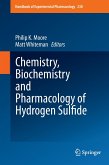Since 1948, hydrocortisone (cortisol), the principal glucocorticoid (GC) of the human adrenal cortex has been successfully used at phar macological concentrations for the suppression of clinical manifesta tions of rheumatoid arthritis. Numerous compounds with GC activity have also been developed and used. Fifty years after their initial clinical use, GCs are still the most im portant and frequently prescribed class of anti-inflammatory drugs for various inflammatory disorders. They are administered either orally, parenterally (intravenous, intramuscular, intrathecal), or topically (cu taneous, intranasal, pulmonic, rectal). Despite the many beneficial ef fects of GCs, they also have their limitations and disadvantages that occur with varying prevalence on different organs and after different durations of therapy. These side-effects can range in severity from cos metic (e.g. telangiectasias, hypertrichosis) to seriously disabling (e.g. induction of glaucoma, diabetes, osteoporosis) or even life-threatening disorders (e.g. gastric haemorrhage). These adverse effects of GCs se riously handicap their successful use as anti-inflammatory agents. There is therefore a strong need for the development of substances with the anti-inflammatory potency of classical GCs but with reduced side-effects.








